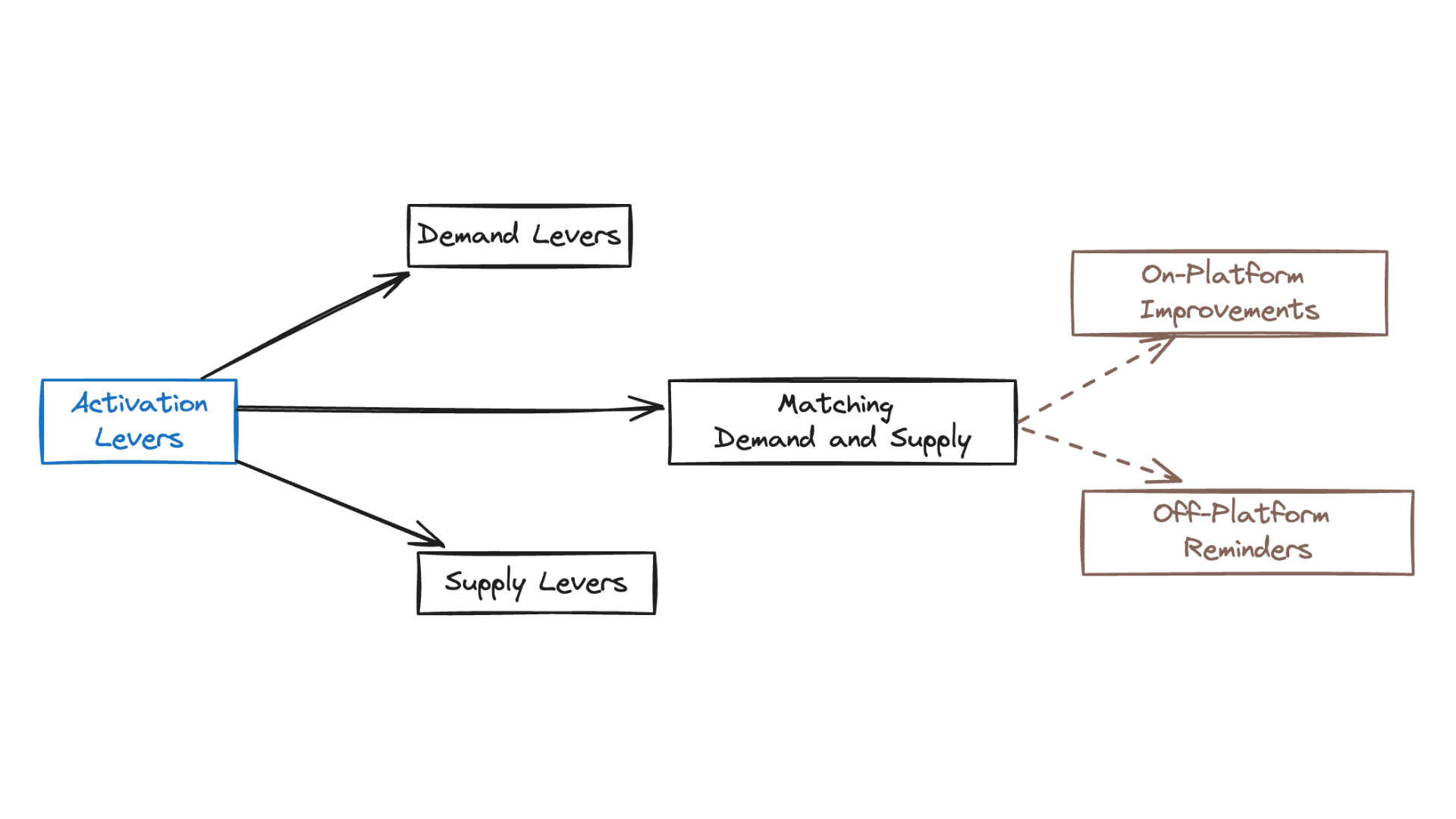What are the buckets of Levers to Improve Activation Rate?
To enhance user activation rates, growth teams often focus on specific tactics. However, a foundational approach requires understanding broader business-related levers.
This concept introduces a comprehensive framework, encompassing three main areas: demand side, supply side, and matching these aspects effectively. Each category has unique levers crucial for improving activation rates.

Demand-Side Levers:
These levers center on attracting users more likely to engage and be retained. Tactics include targeted user profiling and marketing strategies that resonate with potential high-activation users.
Example: An e-commerce site might use behavior-based targeting to reach users who frequently purchase wellness products. Similarly, a language learning app may focus on individuals showing interest in multicultural experiences.
Supply-Side Levers:
Fundamental to activation, these levers involve the product or service itself. In consumer apps and SaaS, it's about product features and user experience. In e-commerce, it revolves around catalog characteristics like price and variety.
Example: A SaaS tool could introduce a core feature sought by active & potential users. Similarly, an online marketplace might focus on offering a diverse range of products at competitive prices.
On-Platform Demand-Supply Match:
This strategy aims to reduce friction within the platform, guiding users swiftly to their 'Aha Moment.' It's about making the right features or products easy to find and engage with.
Example: A consumer app might use in-app prompts to highlight key features, while an e-commerce platform could implement AI-driven recommendations to personalize the shopping experience.
Off-Platform Demand-Supply Match:
Off-platform tactics involve surfacing crucial parts of the activation journey outside the platform. This includes communication strategies that reconnect users with key aspects of the product or service.
Example: A SaaS product could use targeted email series to highlight underutilized but valuable features. An e-commerce brand might send personalized offers based on users’ browsing history.
This concept sets the foundation for exploring each lever in detail. Upcoming concepts will go deeper into how these levers can be effectively employed to enhance activation rates in different online business models.